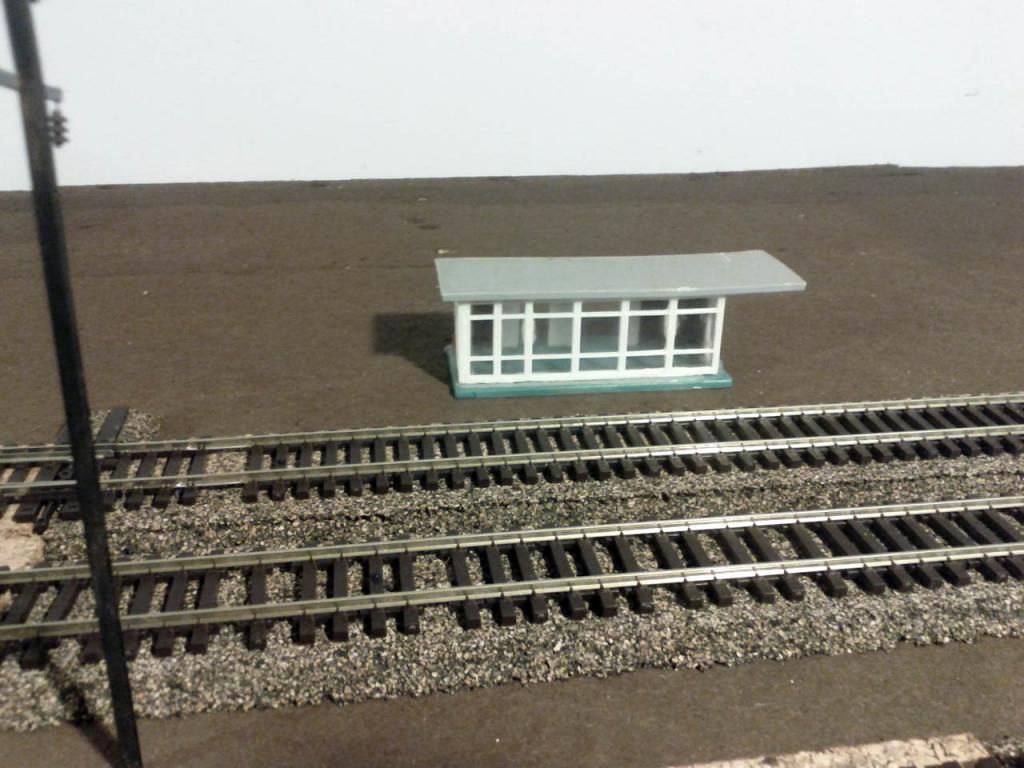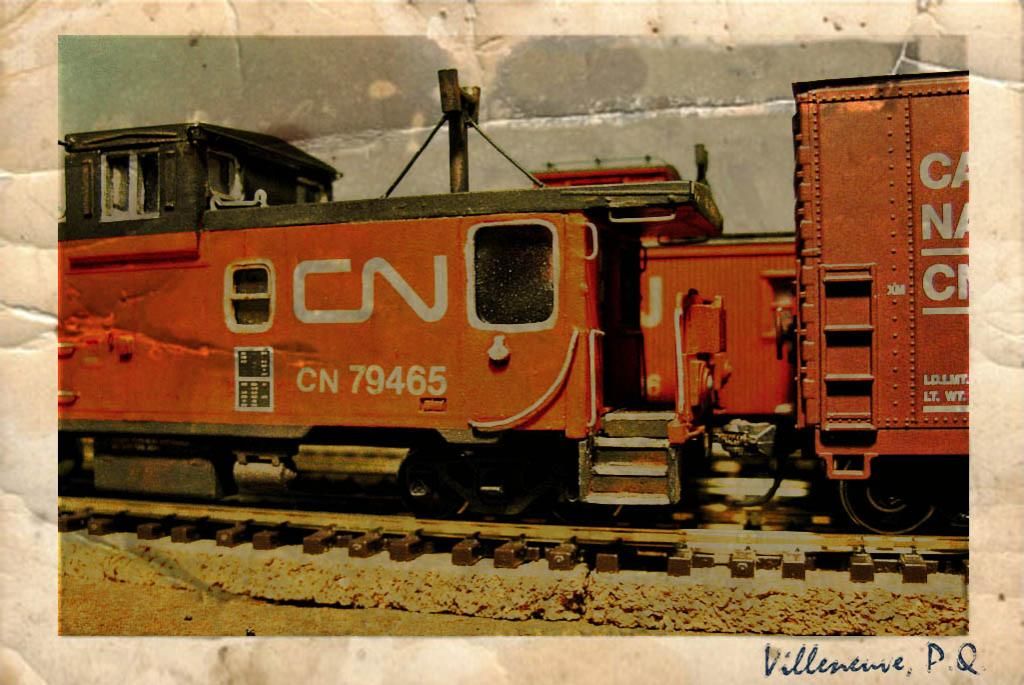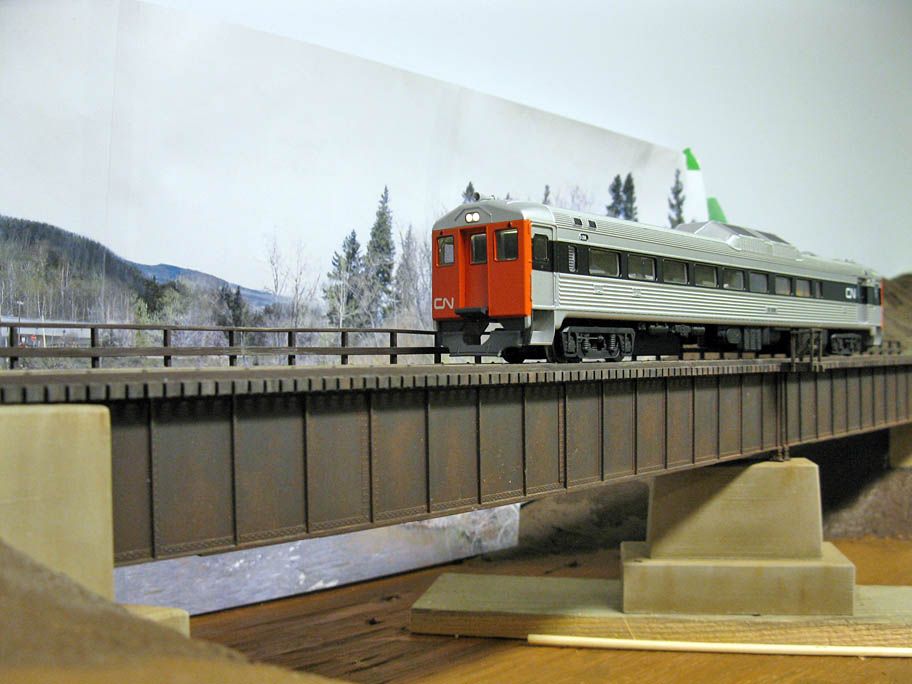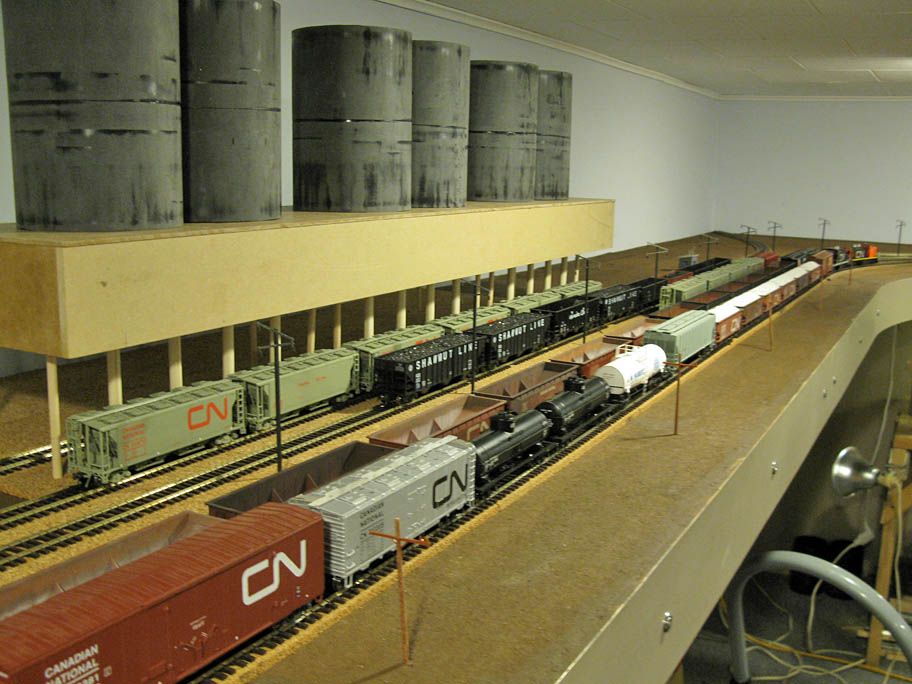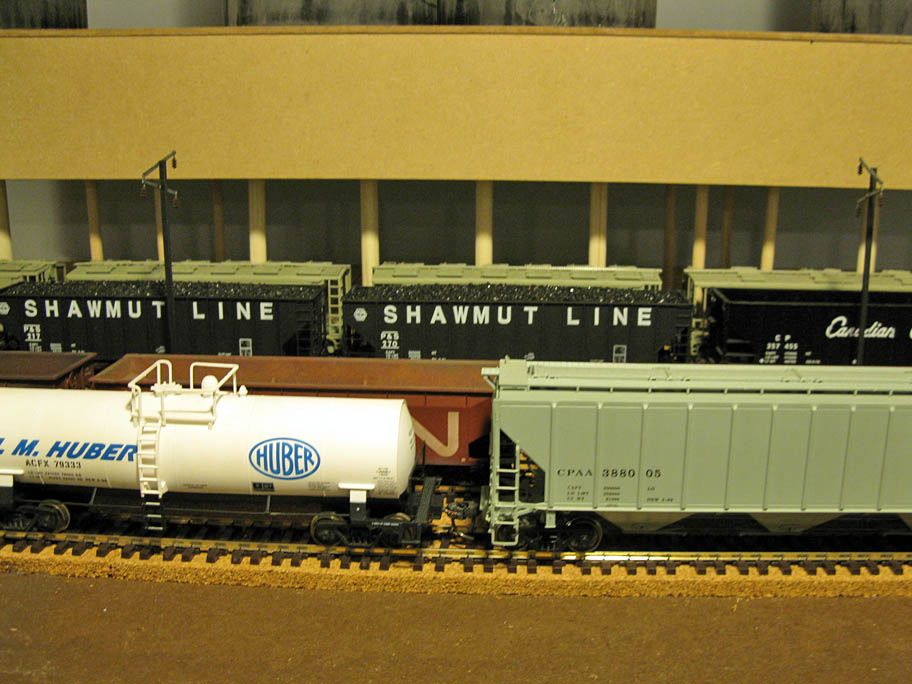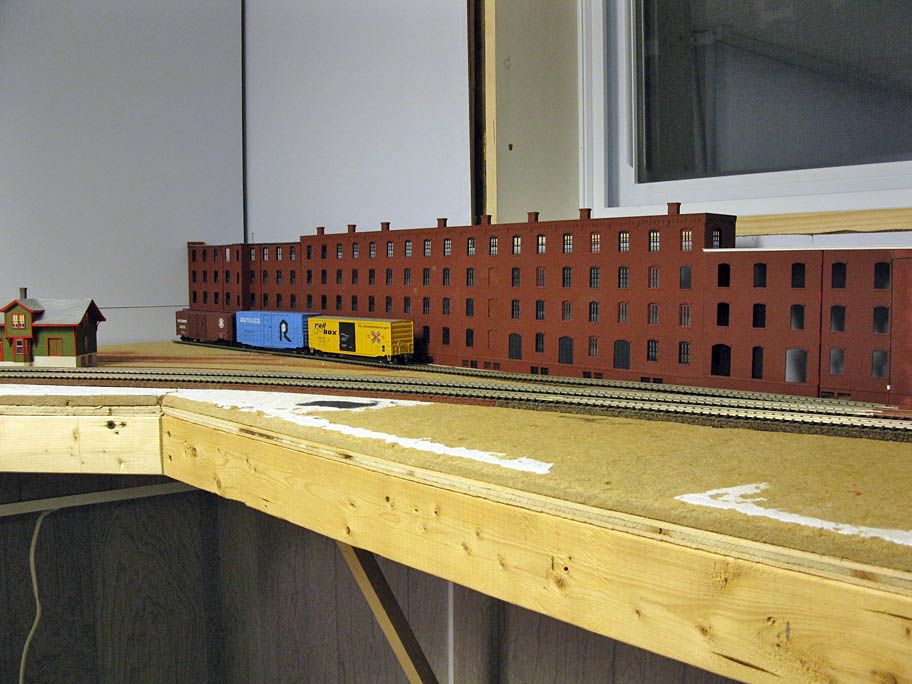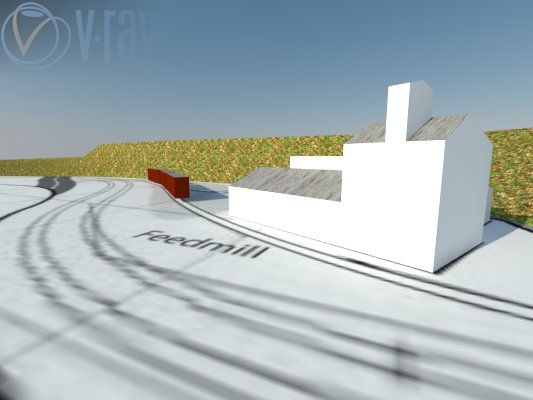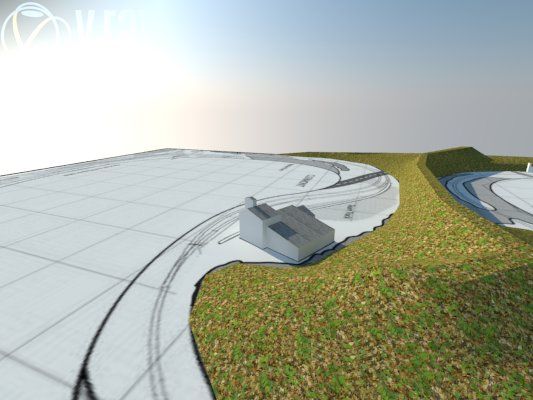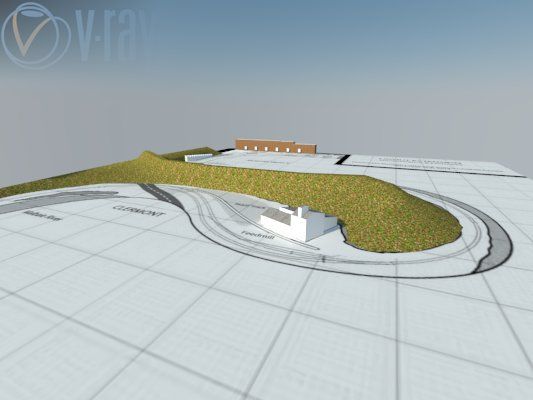 |
| Courtesy Google Maps |
Saturday, December 13, 2014
Murray Bay Subdivision Map
Here's a new map of Murray Bay Subdivision. Nothing fancy there, but it will help to locate most key scenes and understand their geographic interactions.
Friday, December 12, 2014
Traveling Murray Bay Sub in 1983 - Part 1
Earlier this week, Jérôme contacted me after a
friend of him got his hand on a collection of VHS and BETA tapes. These were
collected by a member of Groupe TRAQ when CN got rid of them a few years ago.
The tapes were used to feed an early train simulator from the 80s and that’s
why they are so interesting.
Filmed in 1983 with a camera on top of a
hi-rail pickup truck, most CN subdivisions in Quebec are recorded from mile 0
to end of steel. Better, this process was done for both direction so you can
see everything from two sides.
Maybe my reputation
of living a lifestyle from the past back fired to me, but Jérôme guessed
I had a functional Betamax deck at home ready to watch some cassette... He was right!
So far, I only watched parts of Murray Bay and
St. Raymond subdivisions. Nevertheless, it was a real eye opener because what
you get is prototype information about the entire line from a mainline
perspective.
Murray Bay subdivision changed quite
drastically over the last 30 years. First of all, deindustrialization is
blatant. I have memories of Beauport area and its numerous industries, but
these videos prove how things were dynamic back then. Now the town is a large
sleepy suburb and no more an economic motors. Only one thing didn’t change:
Montmorency. Houses, streets, almost everything is still as it could be seen in
the early 80s. The closure of Dominion Textile in 1985 was the last nail in the
coffin of this once prosperous working-class borough.
Another thing that caught my eye was the growth
of vegetation. Most areas were still clear of trees and panoramas were
generally impressive. That is true of Beauport, Côte-de-Beaupré and even
Charlevoix. Most of that is now gone.
So if you don’t bother, we'll tour
Murray Bay sub as it was in July 1983. Sorry about the crappy TV screen
caption, I have no means available to encode BETA tapes. Also, these images are
mainly for the purpose of illustrating the subdivision and not intended for
reproduction. Be aware, a few surprises awaits you as we travel the
subdivision.
All Aboard!!!!
Our travel start at the junction between Limoilou yard and Murray Bay Subdivision. On the layout, this is the staging loop inside the closet.
Then, we enter Maizerets (part of D'Estimauville). This is where trains gather at the end of the day. It acts as an interchange with Limoilou yard. On the layout, this is the first scene after the staging loop.
Next scene is Rivière de la Cabane aux Taupiers. You'll see how little vegetation was there back in 1983. The field on the right was where Abattoir Legrade was standing until about 1980.
Let's move about a mile until we reach Giffard. We can see a strange turnout standing in the middle of nowhere and perfectly aligned with a gentle sloping road. This is the old junction with Beauport tramway line called the Kent House line. It's terminal was Kent House near Montmorency Falls. The line was closed down circa 1934 but 50 years after, the junction was still visible even if the roadbed was now Boulevard des Chutes. The junction was converted into a team track siding for a nearby sawmill.
About a mile further east, we venture into Villeneuve where Brique Citadelle and Ciment Saint-Laurent dominated the place. The track lost in grass on the right is the old double main line that is still standing there nowadays but fully covered in vegetation. Most key features of these scenes are modelled on the layout at almost full scale. Brique Citadelle plant will probably be incorporated into the layout too.
Next scene is Montmorency Falls where stood the massive Dominion Textile plant, one of the largest cotton mill in North America at a time. Domtex was the world largest producer of denim before it collapsed after a failing bid to secure its future in synthetic textiles. The plant closure doomed the borough of Montmorency and time stopped there. The only parts of the entire video that are identical to what we can see nowadays is Montmorency. The place was put under a glass bell and stopped to evolved. 30 years later, Dominion Textile ghost is still haunting the place even if material remnants are almost inexistant.
The plant itself was featured in Frederic Back's short animated movie Crac! from 1981 (Dominion Textile scene at 10:50). The movie tells a tale of industrialization in rural Quebec and loss of identity, you'll even see good old steam action and I like to think this is a late 1880s QRL&PCo consist. It is set in a generic setting, but many visuals are heavily influenced by Côte-de-Beaupré area... like some kind of artistic epitaph. Crazy, but this short movie is still cited by the Japanese animation industry as a source of inspiration along with Back's seminal The Man Who Planted Trees. Crac! excellent traditional square danse song (time 2:40) is coincidentally named La Galope de La Malbaie and thus, in some way, is related to the layout. Songs are performed by folk group Le Rêve du Diable. Well, I must say watching this movie always depress me... it's like looking in the mirror on a bad day. Anyway, let's move!
Final scene is just accross Montmorency River in Boischatel. This is the original Brique Citadelle plant. Until three years ago, most foundations could still be seen there. It doesn't seem it was still rail-served in 1983, there's no siding branching off the main line.
Next time, we will travel Côte-de-Beaupré up to St-Joachim.
All Aboard!!!!
Our travel start at the junction between Limoilou yard and Murray Bay Subdivision. On the layout, this is the staging loop inside the closet.
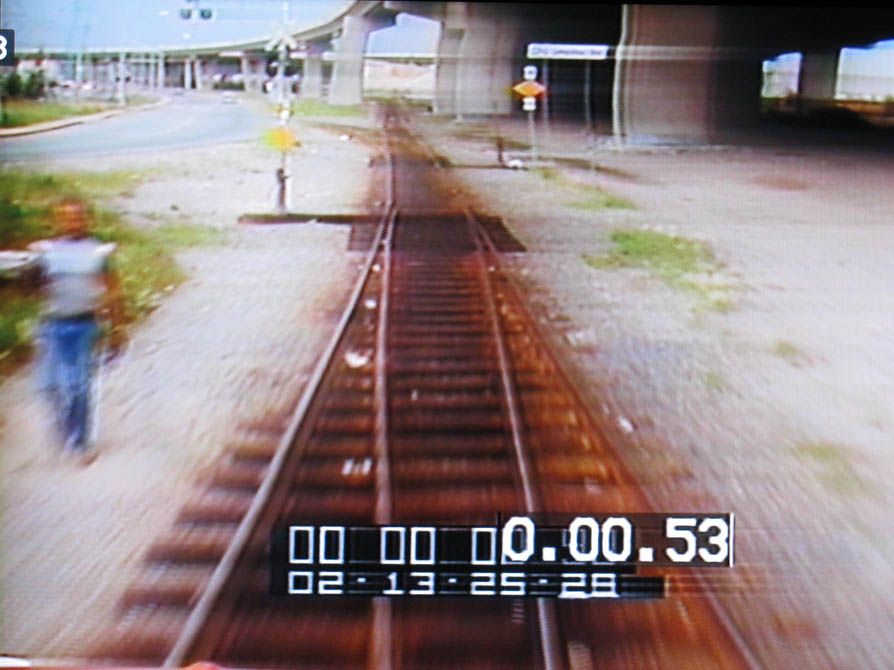 |
| This is MP 0.8 on Murray Sub. The subdivision start after the turnout. |
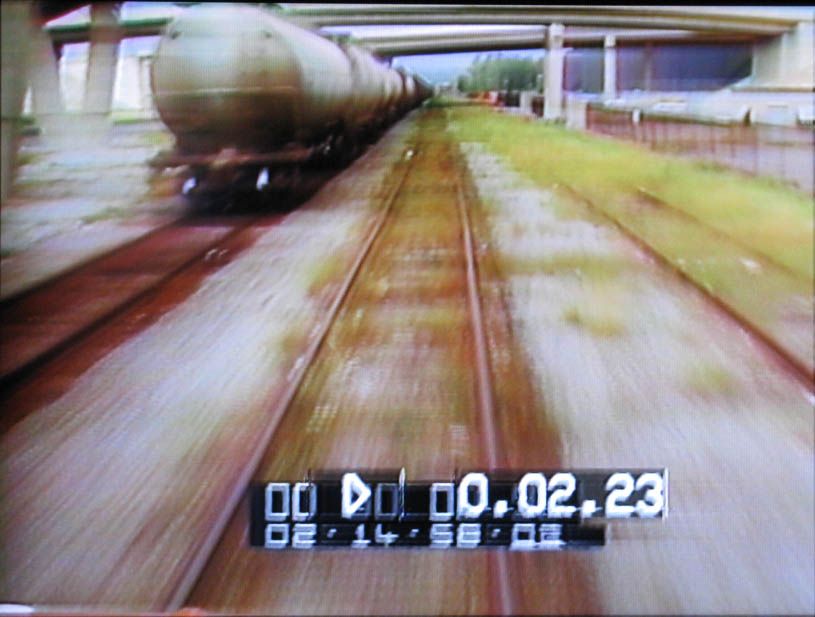 |
| Cement cars wait in the siding at Maizerets. |
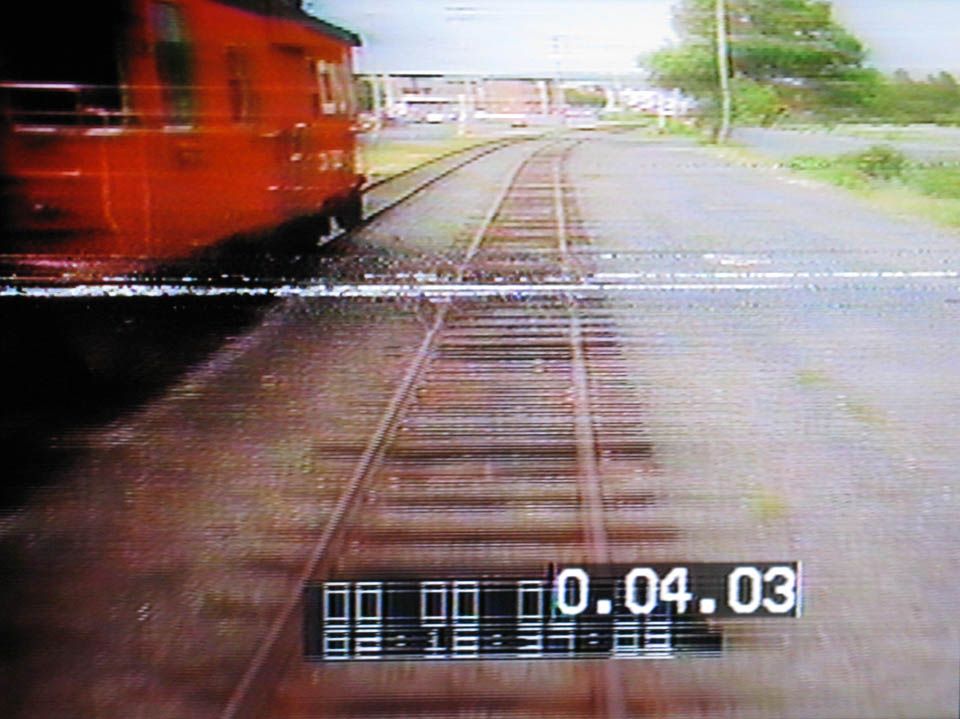 |
| A nice PSC caboose at the end of the consist. Domain Maizerets is in the background. |
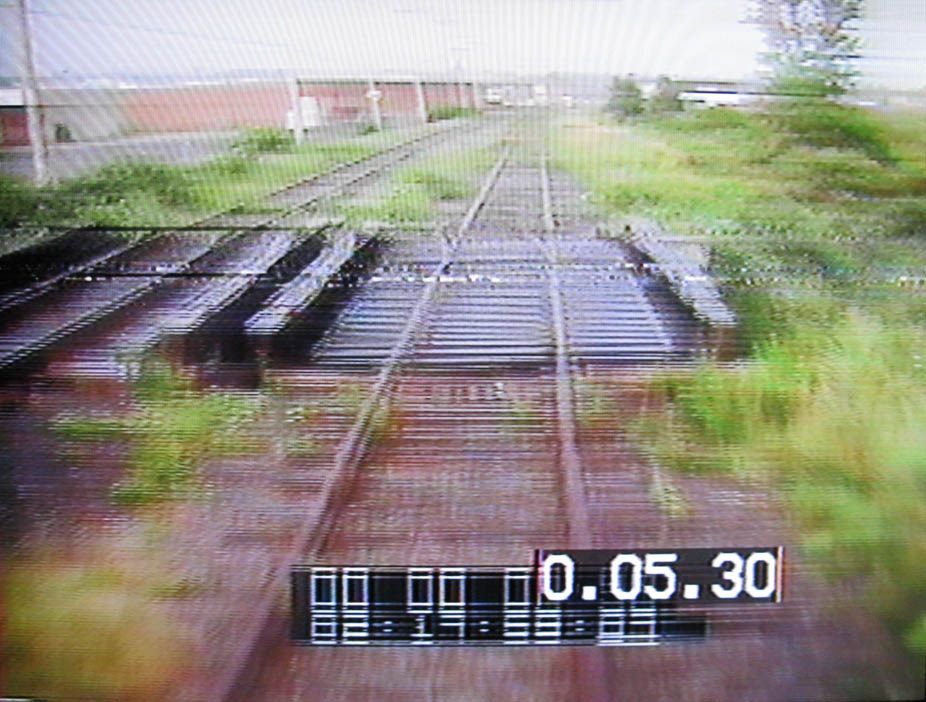 |
| Bridges over the small brook where ducks gather. D'Estimauville avenue in the background. |
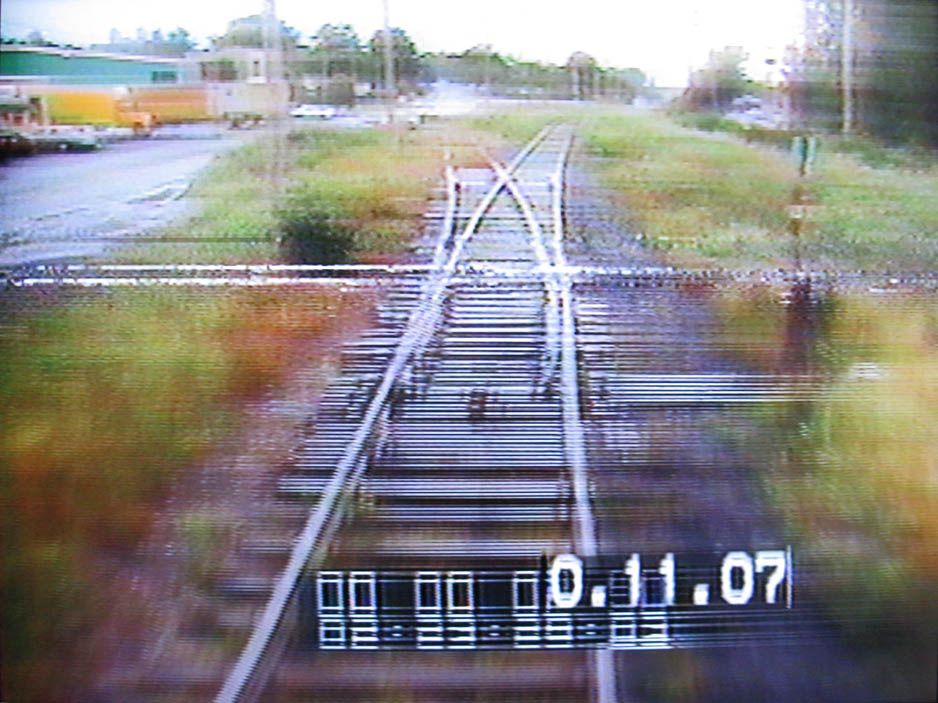 |
| Junction with old Kent House Line in Eastern Giffard. |
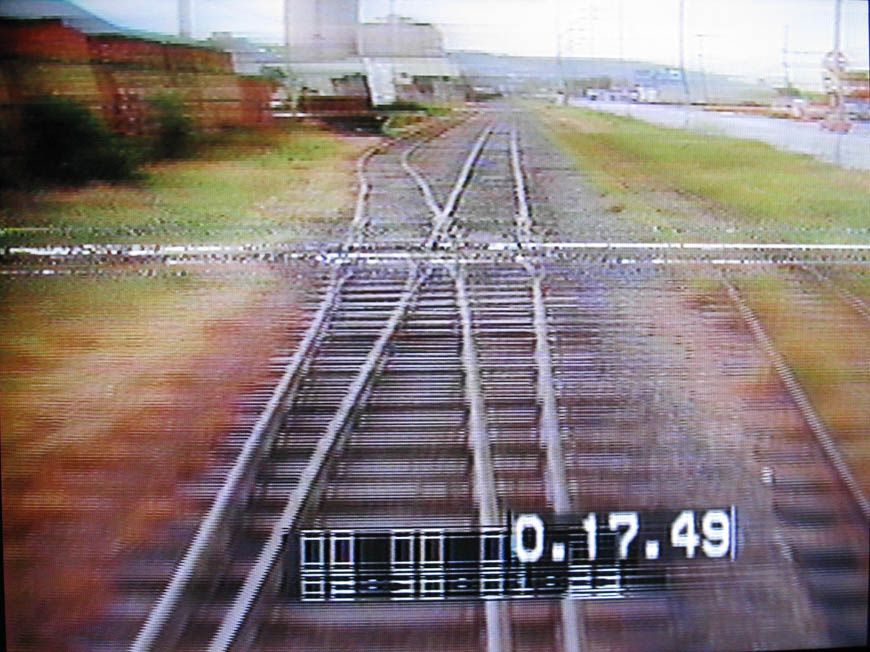 |
| Entering Villeneuve yard limits. Brick pallettes on the left, cement plant in background. |
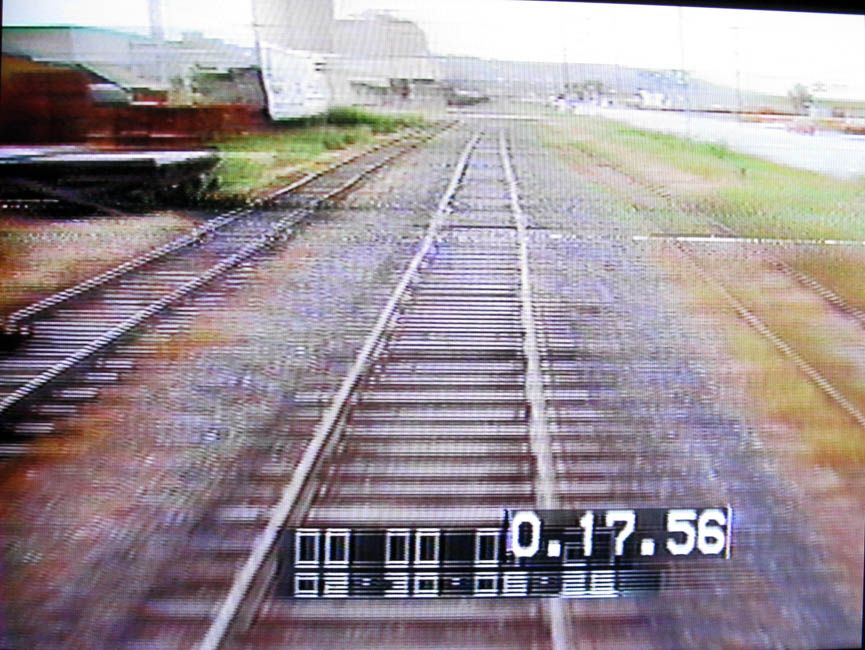 |
| Brique Citadelle loading dock on left. |
 |
| Rue du Sous-bois crossing and the cemet plant. |
 |
| A cut of cement hoppers waiting on Villeneuve left-most siding. |
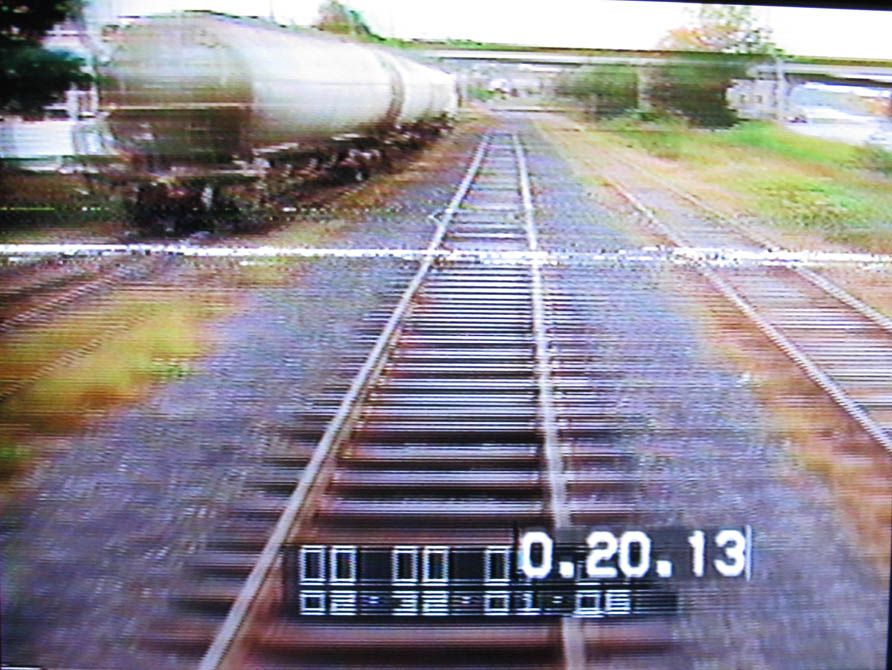 |
| A short 3-cars train moving out from the plant. |
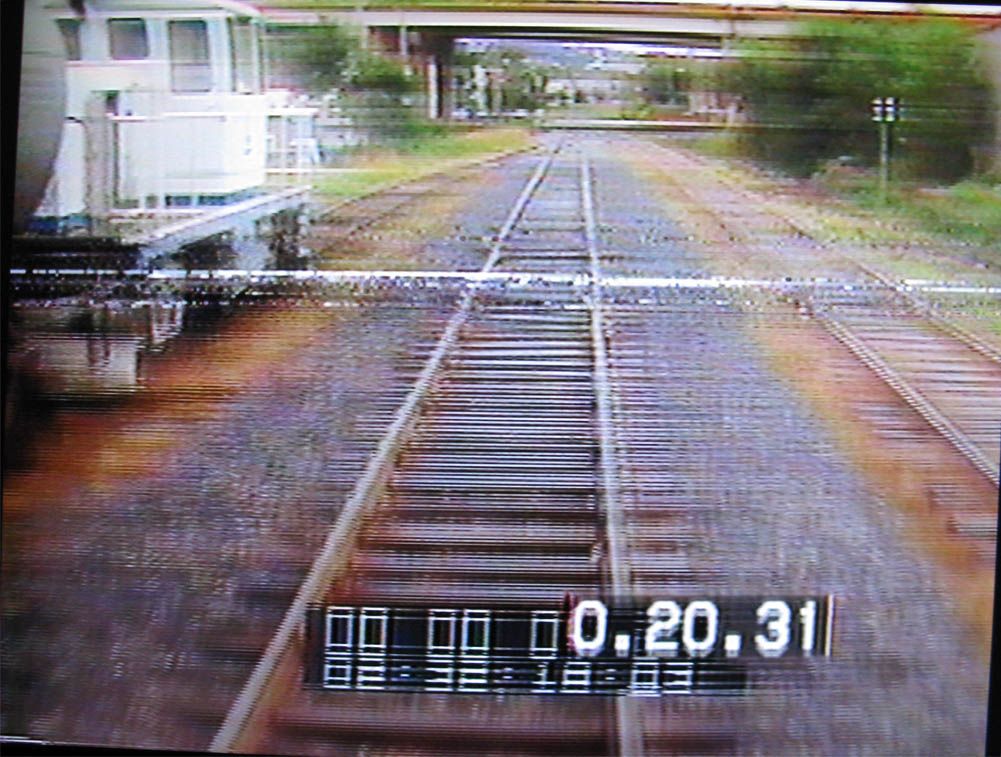 |
| Industrial switcher pulling the 3 cars. Montmorency in the background. |
The plant itself was featured in Frederic Back's short animated movie Crac! from 1981 (Dominion Textile scene at 10:50). The movie tells a tale of industrialization in rural Quebec and loss of identity, you'll even see good old steam action and I like to think this is a late 1880s QRL&PCo consist. It is set in a generic setting, but many visuals are heavily influenced by Côte-de-Beaupré area... like some kind of artistic epitaph. Crazy, but this short movie is still cited by the Japanese animation industry as a source of inspiration along with Back's seminal The Man Who Planted Trees. Crac! excellent traditional square danse song (time 2:40) is coincidentally named La Galope de La Malbaie and thus, in some way, is related to the layout. Songs are performed by folk group Le Rêve du Diable. Well, I must say watching this movie always depress me... it's like looking in the mirror on a bad day. Anyway, let's move!
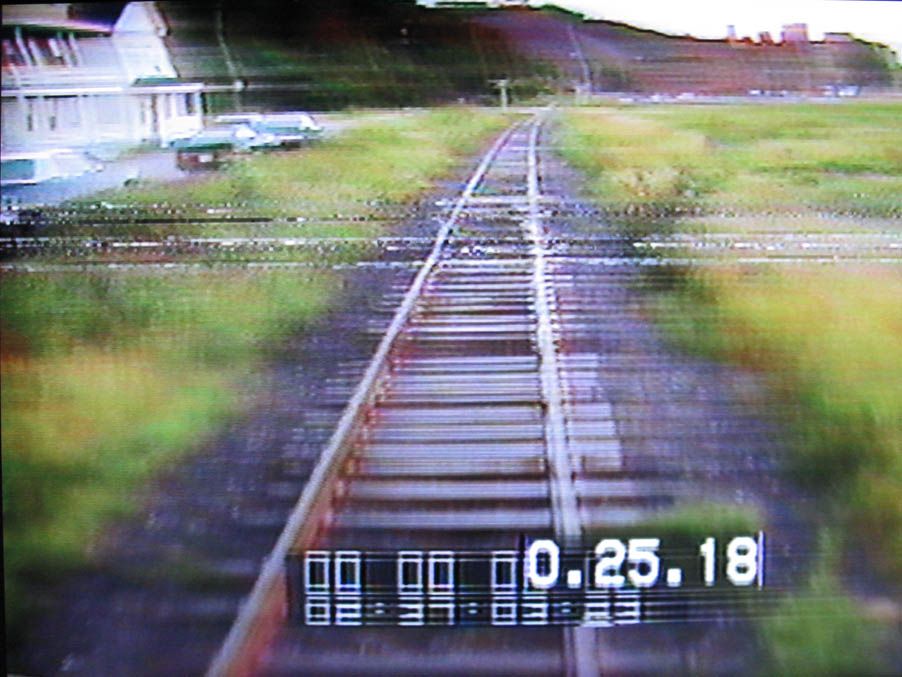 |
| Leaving the residential area, Dominion Textile on upper right corner. |
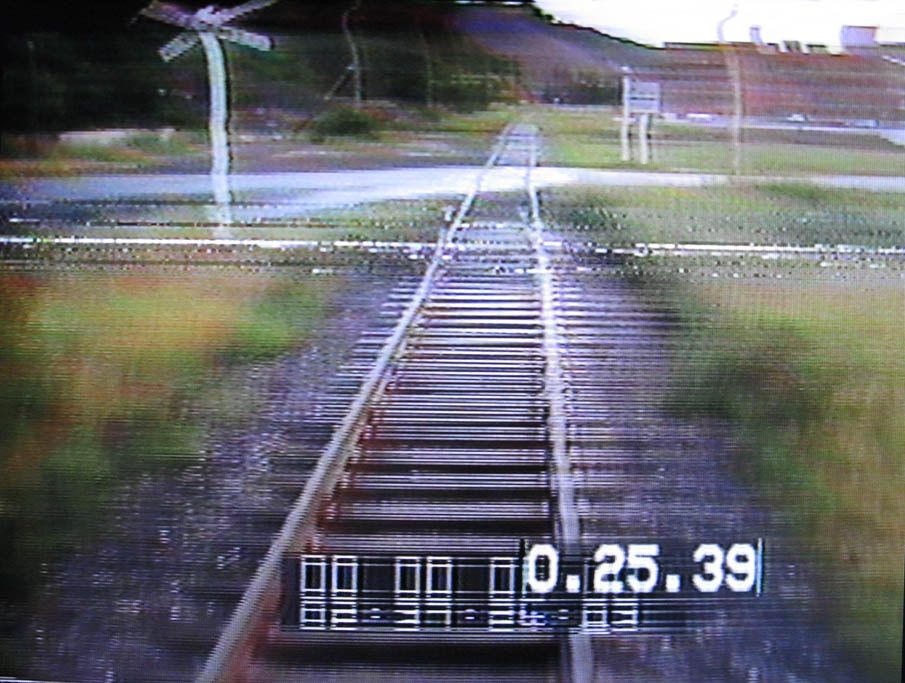 |
| Dominion Textile private crossing with old wood crossbucks. |
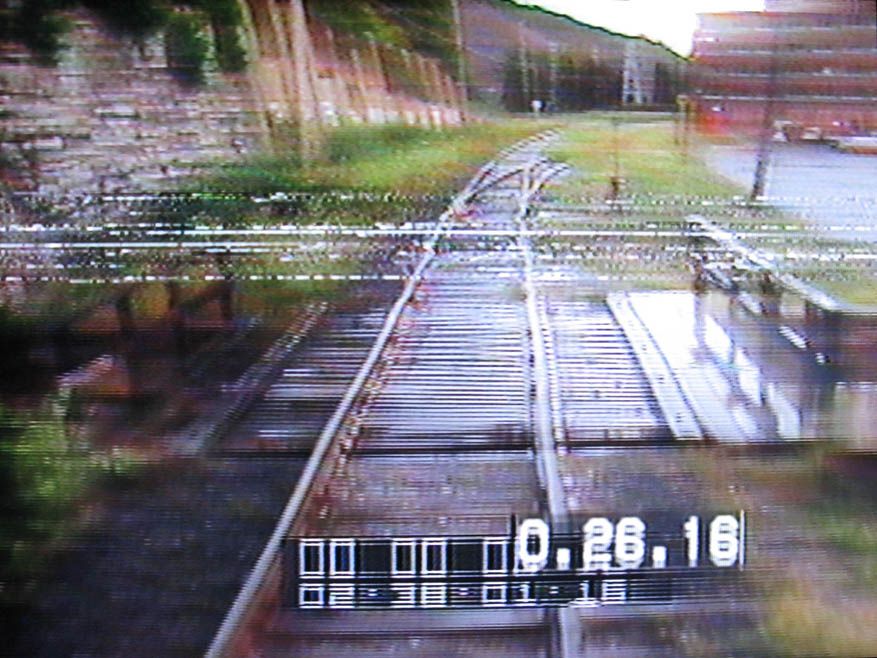 |
| Old QRL&PCo hydroelectric stockpen remnants on the left. |
 |
| Dominion Textile unloading deck for cotton boxcars. Montmorency river in the background. |
Final scene is just accross Montmorency River in Boischatel. This is the original Brique Citadelle plant. Until three years ago, most foundations could still be seen there. It doesn't seem it was still rail-served in 1983, there's no siding branching off the main line.
 |
| Brique Citadelle in Boischatel. Warehouses on both side of main line. |
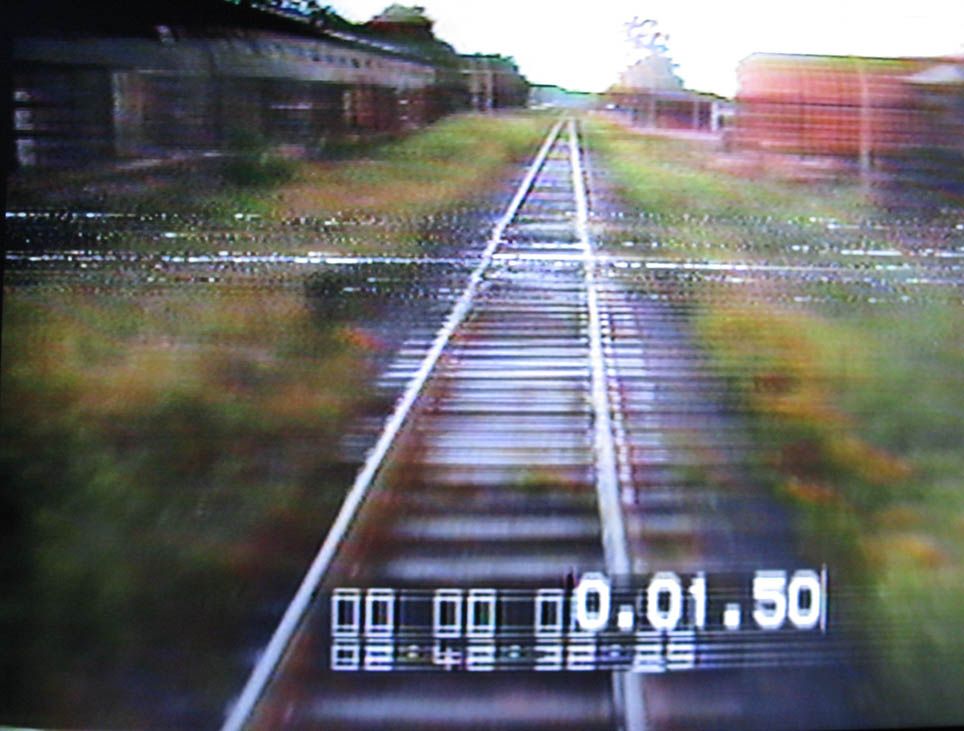 |
| Old rail-served warehosue on the left, brick palettes on the right. |
Wednesday, December 10, 2014
Donohue in 1983
Quebec Archives (BAnQ) is always a nice place to search for old photographs. Not everything is scanned, but I was lucky enough to find out they made available aerial pictures of Clermont taken in 1983 by Jean-Marie Cossette (Point du Jour Aviation).
Funnily, nothing changed that much since then. Nevertheless, this is good source material to see railcars and trucks in use at that time. Also, it seems the "newer" parts of the mill were already badly weathered.
There's less trees... that's a given, but the nice part was to find out a small storage yard existed on Donohue's property.
Environmental issues weren't really issues back then as this direct spillage into the river tells us.
And finally, we can get a glance at the GE 44-ton switcher pulling a few cars (on the picture's lower righ quadrant).
I must admit I found a lot of source material from 1983 in the recent days. More to come!
Funnily, nothing changed that much since then. Nevertheless, this is good source material to see railcars and trucks in use at that time. Also, it seems the "newer" parts of the mill were already badly weathered.
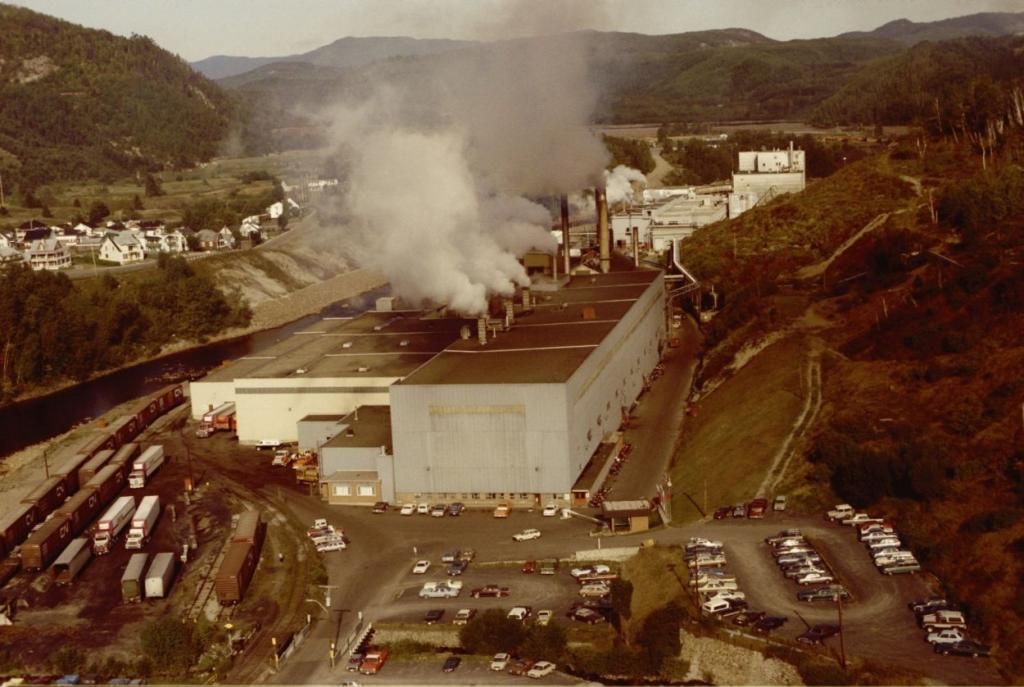 |
| Donahue in 1983 (Jean-Marie Cossette, BAnQ) |
There's less trees... that's a given, but the nice part was to find out a small storage yard existed on Donohue's property.
 |
| Donahue in 1983 (Jean-Marie Cossette, BAnQ) |
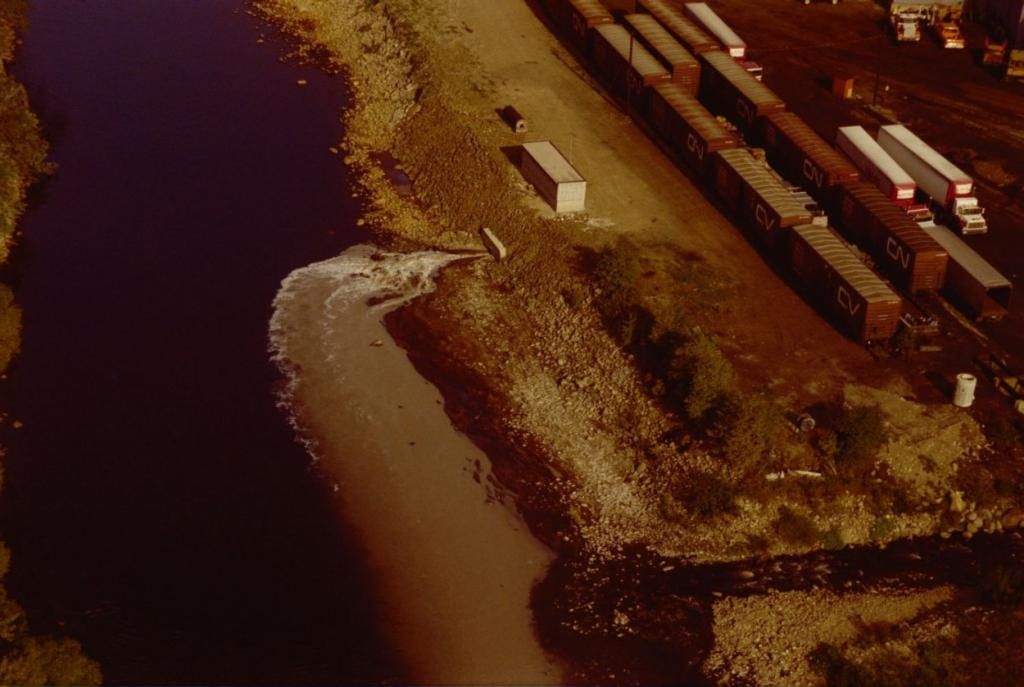 |
| Donahue in 1983 (Jean-Marie Cossette, BAnQ) |
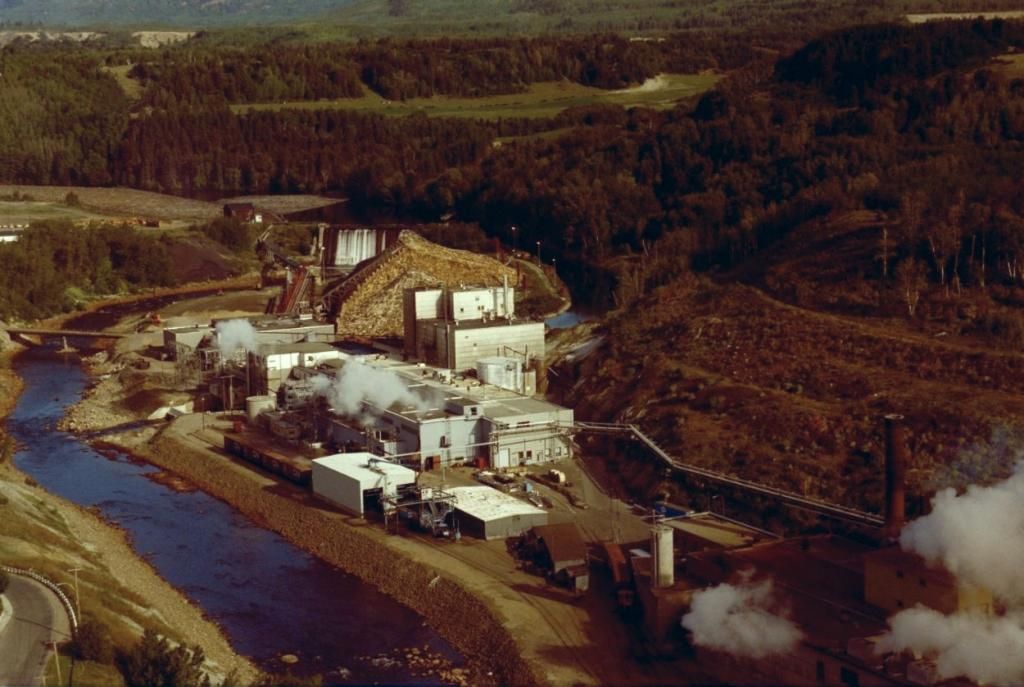 |
| Donahue in 1983 (Jean-Marie Cossette, BAnQ) |
Track Scale at Villeneuve
Louis-Marie sent me these pictures yesterday.
As previously discussed last week, they detached the bay window from an old
Life-Like bungalow kit to make a modern scale building.
It will need a few
modifications, but so far, it looks quite right for a mid-50s building.I'm seriously thinking we should look back at old Life-Like structures as bashing source material. Some buildings are truly representative of the 50s and 60s.
Friday, December 5, 2014
Winter Blues
I didn’t feel well yesterday and finally
decided to operate the layout and try to find out electrical bugs here and
there. Nothing fancy... with my headache, locomotive sound was getting on my nerves!
Meanwhile, Jérôme started to convert the new Dayliner (Budd RDC-2) to
DCC. Seems it will be a lot of work to get it working in order. His intention
is to add a camera into the cab, new lighting including red tail lights and,
maybe, sound. I must admit it may sounds like a gimmick, but it will be a once
in a life time chance to travel good old QRL&PCo tracks on an interurban
train.
Since wiring isn’t yet complete, switching at
Ciment St-Laurent was arduous and I quickly clogged Villeneuve yard as I didn’t
have any access to staging. I think getting car storage will be crucial before
any large scale operation sessions starts. Louis-Marie is actually designing a
cabinet that will hold cars off track in D’Estimauville.
Anyway, I was also happy with the freight car
fleet which is quite coherent and realistic. The view of Villeneuve gives a
good idea of the usual cars to be found on the layout.
Finally, I made some changes to Dominion
Textile plant. I recently studied insurance maps from the 50s and tried to
understand how the plant really worked. Basically, raw cotton was received on
the eastern-most warehouse and manufactured goods were shipped from the
western-most warehouse. It makes sense because foreign cars from southern USA
were always spotted west while Canadian cars east. In the later years, most
goods were trucked and only cars can be seen on the east side.
 |
| This scene start to look like the real thing. |
My first version of Dominion Textile was very
dynamic with lots of intricate volumes. In fact, the real plant was quite plain
on the railway side. It was a large brick façade towering over a small olive
green with orange trims station (destroyed in 1978). It was a one-sided urban
canyon.
Yesterday mock up followed this pattern as closely as the available
structures could afford. I’m not 100% sure, but it made enough room to model
the old electric powerhouse that stood behind Dominion Textile. Anyway,
modifications will wait since D’Estimauville and Villeneuve have priority.
Breaking News: Today is another sad day for
Charlevoix. After General Cables closure, one paper machine out of two will be
permanently shut down in Clermont. The company listed many factors and stressed
it was permanent. This mill is probably going to end up like the one in Beaupré
in a few years; torn down. I won’t be nostalgic about that. Markets and needs
evolve, industries are merely answering for given time, to them. However, that
may call the definitive end of freight trains over Murray Bay sub. Ex-Donohue
mill is the last sizable customer surviving in the area. Since the 80s, 15
large and medium-sized customers close down… It includes, among many others;
Ciment St-Laurent, Briques Citadelle, Dominion Textile and Abitibi-Price. They
have been obliterated from the face of the Earth…
But I must admit seeing your birthplace dying
out and morphing into a faceless sprawling suburb isn’t very rejoicing. Seeing
school dropouts getting rich by breaking rules and building crappy new
neighbourhoods and commercial strips isn’t exactly my definition of progress.
May God forgive them. But let’s face it… Any people living in rural areas near large cities know this
feeling. I just wish I wouldn’t have to witness it, but that’s part of growing
old I guess.
Wednesday, December 3, 2014
Wieland: Modelling Empty Space
Well, before any work starts on the peninsula,
I decided to try my ideas with a 3D model. Less messy and you can start over
again without problems. SketchUp is a great tool for that purpose. Rendering is
done using the trial version of V-Ray 2 plugin.
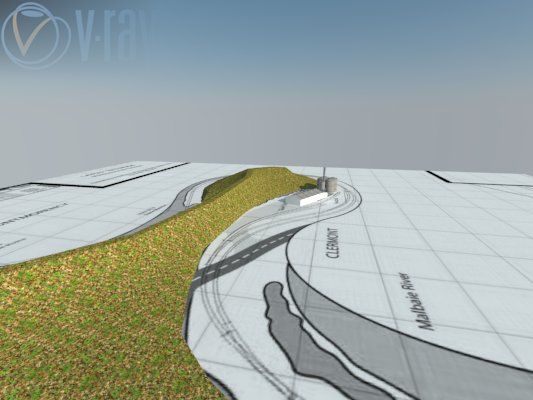 |
| Coop Agrivoix |
 |
| Sainte-Anne Coop |
Both prototype feedmills previously discussed
were modelled… The results puzzle me but some elements stand out.
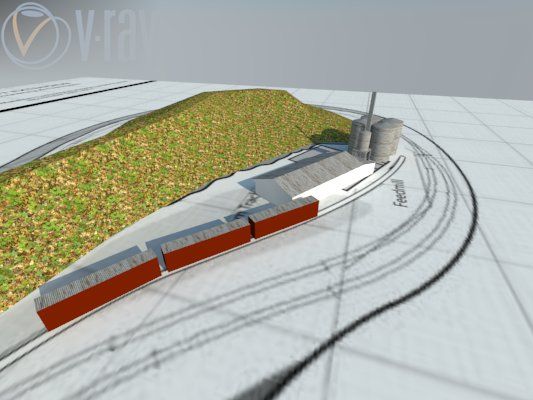 |
| Coop Agrivoix |
Agrivoix (the one located in Clermont) looks surprisingly
good. I think its low profile and long façade works well with the background
mountain. Bizarre enough, it seems there’s enough place behind the building to
have a realistic parking lot to handle road traffic. However, as feared, the team
track is seriously shortened… It barely holds three 50ft cars.
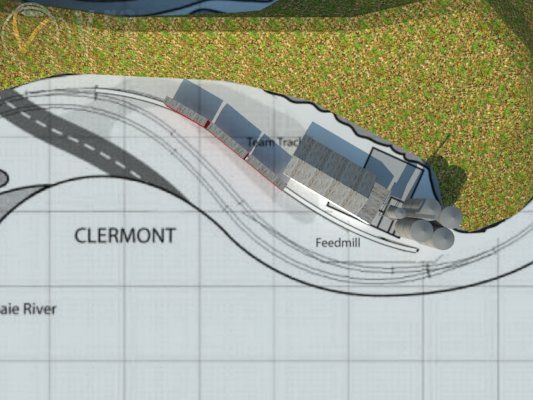 |
| Coop Agrivoix |
Sainte-Anne’s Coop is also looking good. In
fact, its large side wall toward the parking lot makes a nice focal point to
close the scene. Relation with the mountain relief is also good, the building’s
profile naturally nest itself against the scenery. All in all, this structure
has the advantage of leaving enough empty space to make the scene “larger”. To
be bold; enough space to believe large semi-trailer trucks can work around the
team track.
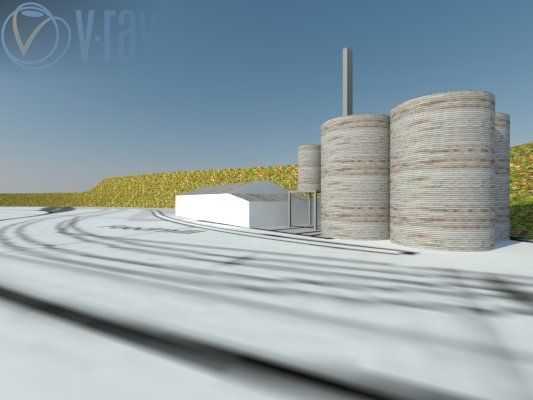 |
| Coop Agrivoix |
When you start adding cars on the team track,
you start to understand when I talk about a cluttered scene. Sainte-Anne Coop
fare better than Agrivoix in that respect.
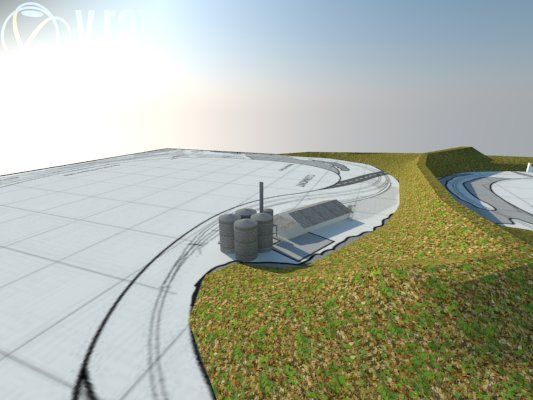 |
| Coop Agrivoix |
I have no final thoughts about the feedmill. I
could try to compress or rearrange Agrivoix buildings to suit the place better.
It could also be a small mash up of Sainte-Anne and Agrivoix. Steel grain bins
could be added to Sainte-Anne feedmill to modernize it a little bit, even a
propane tank or oil tanks. It is really hard to tell. One thing is sure; this
scene works better together when a structure closes the perspective. Maybe I
won’t keep the idea of a feedmill on site, but there will definitely be a
building there. I already have pictures from one of the shed that stood at
Clermont yard back in the early 80s.
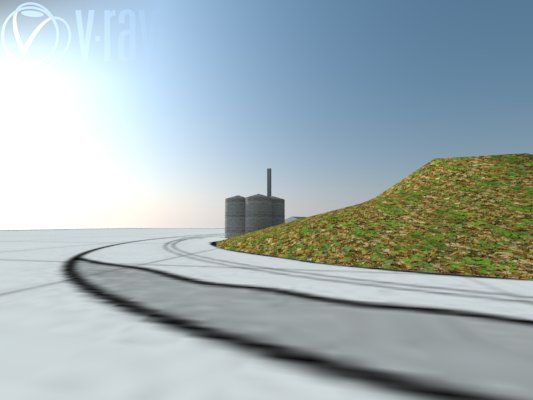 |
| Coop Agrivoix |
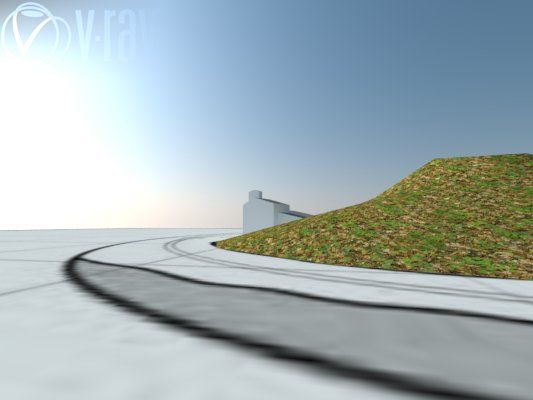 |
| Sainte-Anne Coop |
I think – when planning a scene – we have to
learn about modelling empty space. Failing to address this important factor is
the main pitfall that makes so many greatly crafted layouts look toyish. Look
around yourself, you’ll find more emptiness than built up space (in the
countryside at least!). Railways are
large endeavours span large areas. Reproducing it in scale is crucial. It means
to sacrifice a lot of things on your “must list”, but you are largely repaid in
term of realism. You really feel your trains need to travel some distances to
perform their tasks. So far, Donohue, Ciment Saint-Laurent and D’Estimauville
proved me I was right to walk this unusual path. Modelled scenes are truly
glimpses of a real network. No need for fancy tricks; any visitors with minimal
knowledge of the place with quickly find himself at home.
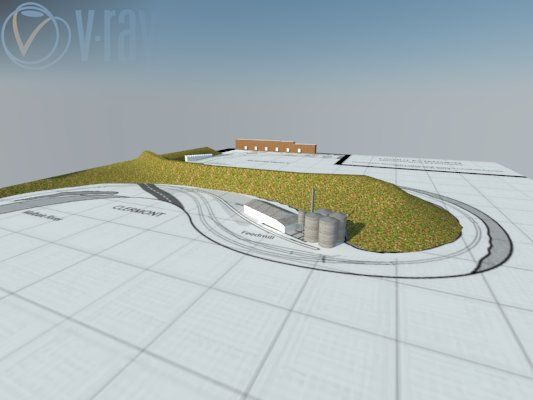 |
| Coop Agrivoix |
Subscribe to:
Posts (Atom)

